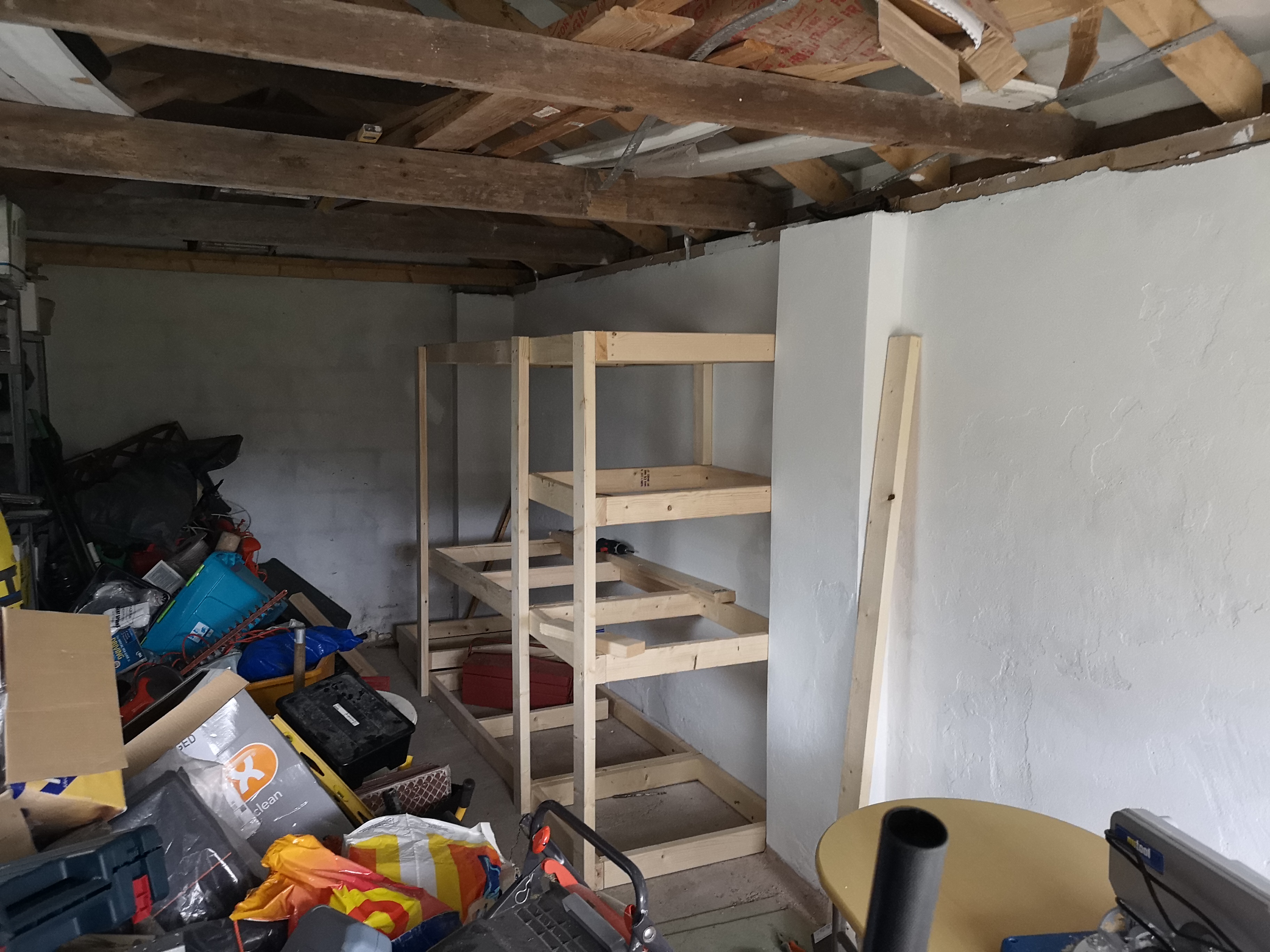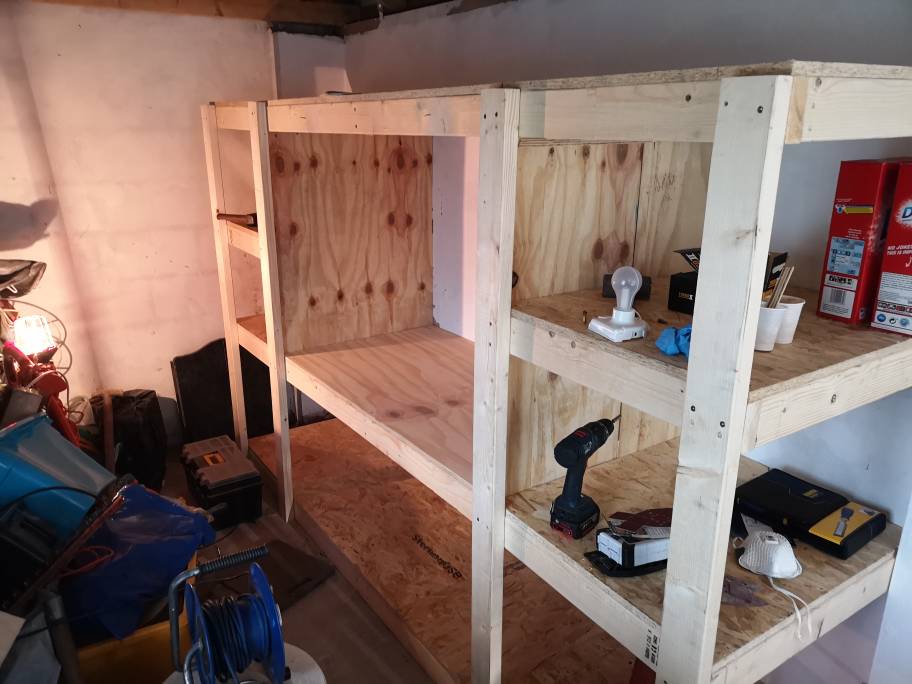Hi all, long time occassional lurker and finally i've decided to create an account to get some advice/input on a design i'm working on for my garage. I've currently taken the week off to de-clutter my garage and create a storage solution at the back as well as a work bench for when i need to tinker with things.
When it comes to wood working i'm an absolute amateur save for doing 'Resistant Materials' in high school back in the day. I've had a look at the type of wood i could use and have set my eyes on 4x2 CLS studding timber for the frame work and OSB 3 18mm for the sheets but i don't know if this is overkill or not enough? My sketchup is below, would appretiated any and all help!
Cheers
When it comes to wood working i'm an absolute amateur save for doing 'Resistant Materials' in high school back in the day. I've had a look at the type of wood i could use and have set my eyes on 4x2 CLS studding timber for the frame work and OSB 3 18mm for the sheets but i don't know if this is overkill or not enough? My sketchup is below, would appretiated any and all help!
Cheers



































